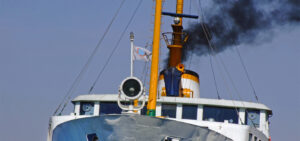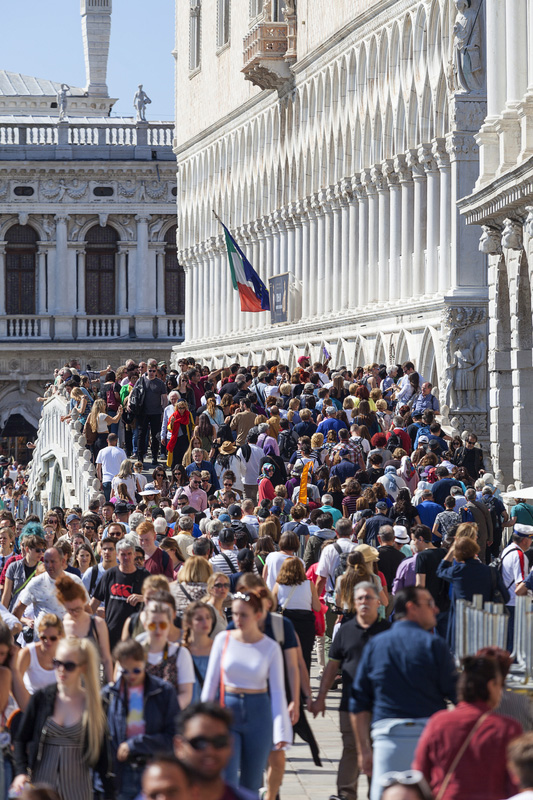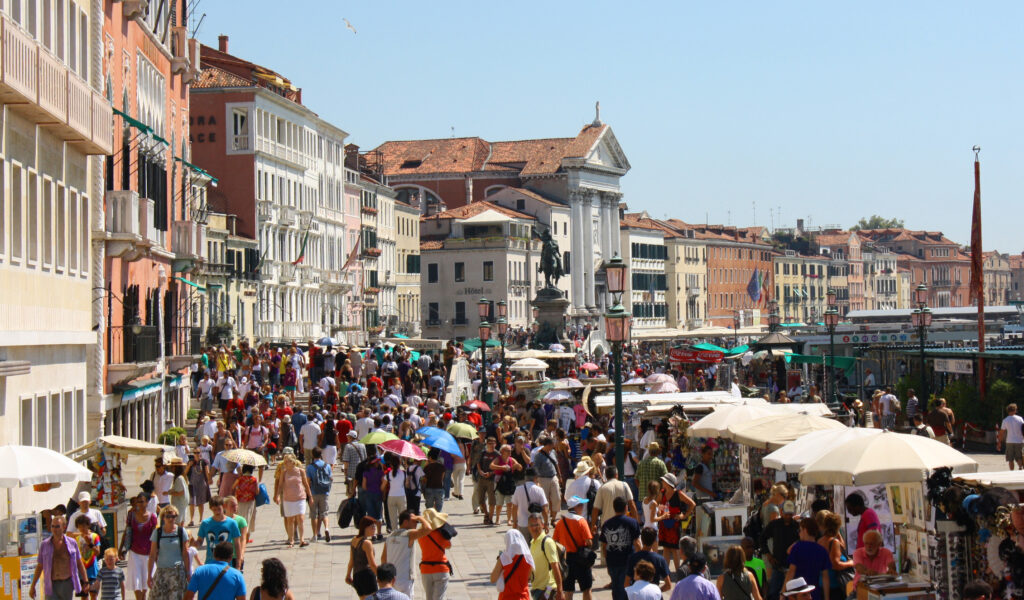How much tourism is overtourism?
By Mike Jarrett
The sight of huge, state-of-the-art cruise ships sailing into port and disgorging thousands of passengers may understandably create a sense of pride and progress among locals. And the annual sector reports will proudly quote the arrival of massive numbers of cruise passengers over a fiscal period as clear signs of progress. Ministers of tourism and proud mayors of cruise destinations will beam with pride as they recite impressive increases in visitor arrivals, year over year. But how much tourism is overtourism?
2019, November 1: Climate change and the current sensitivity about the lasting effects of man-made pollution have posed 21st Century lawmakers some inconvenient choices. And increasingly, pressured to reduce CO2 emissions, those choices must be made under the glare of a sensitized news media and angry environmental activists, inspired, galvanized and organized with social media.
It is indeed a new day for activism and protest.
Environmental activism, for purposes of this essay, is defined as united or supportive action by various individuals and groups, collaborating in order to stymie or modify policy decisions that threaten or degrade nature. And activists, emboldened by the action of other groups as reported in social media channels, have become increasingly strident and, at the very least, persistent.
In a world driven by informatics and technology, it is possible to capture and store far more data than previously thought possible. Such data, interpreted or misinterpreted, are made readily available on-line as grist for the public mill of opinions. Prodded by fear or conscience, people will eventually move to action in defence or pursuit of specific principles or ideals. And, sustained, such action becomes activism, to be manifested in one or various forms to varying degrees of intensity.
Evidence of climate change and the frightening results presented by current scientific study have legitimized the efforts of environmentalists who, for centuries, have promoted learned discussion on Earth science topics. Indeed, the forerunner of environment protection organizations, (Britain’s) The Royal Society (later renamed the Royal Society of London for Improving Natural Knowledge) was first chartered in 1662, as Britain assembled its global empire and the ideas and basic instruments for measuring — the barometer, hydrometer, rain and wind gauges and the thermometer — became more widely available. That body of knowledge and the systems and techniques for sampling and recording climate data (accumulated by an expanding global network of similar organizations) provided valuable benchmarks. With the mobility of 21st Century technology and ready accessibility to global data records, scientists and conscience-driven activists have been able to make compelling arguments. They naturally direct their message, anger and anxieties to the elected policy makers. And these makers of laws have been forced to listen.
In the debate, dialogue, discourse and occasional diatribe about environment pollution and its causal relationship with combustion of fossil fuels, the shipping industry has been fingered; identified and accused as being a significant part of the problem. But what are 21st Century lawmakers hearing? And how are they responding?
- Ship exhausts threaten the environment.
Ships, like all machines with internal combustion engines, do produce toxic exhausts. However, ships traditionally did burn the cheapest, bottom-of-the-barrel residual fuel oil. And that placed shipping in the dirtiest industry. category. Strong and resolute action ultimately led to global consensus and regulations. And the most far-reaching of such regulations takes effect on January 1, 2020.
The regulatory authority for international shipping, the International Maritime Organization (IMO), took the decision to further reduce the global sulphur limit to 0.50% m/m (mass/mass) in 2020. This new limit, set in October 2016, is well below the 3.5% m/m global limit previously set and now in place. The lawmakers heard and responded.
 The drastic lowering of the sulphur limit indicated of the urgency that the IMO has brought to its objective of ensuring that the shipping industry delivers on its obligations to protect Earth’s environment.
The drastic lowering of the sulphur limit indicated of the urgency that the IMO has brought to its objective of ensuring that the shipping industry delivers on its obligations to protect Earth’s environment.
- Ships exhaust more toxic hydrocarbons while in port as against traversing open water.
This is a moot point in the absence of audited data. To be sure, when a cruise ship is stationery in port, its systems, including HVAC, are in operation.
At the very least, exhausts from internal combustion engines, powering electric generators, will be discharged into the atmosphere for the duration of the vessel call. Wind strength and shifting patterns will then determine the area and the extent to which toxic exhausts from ships impact the environment and threaten ecosystems. The burning of cleaner fuel, as ruled by the IMO, will certainly have a positive effect in reducing air pollution from ships in port.
The success of the IMO sulphur limit initiatives can only be measured in the course of time. But, given the number and size of the world’s ocean-going fleet, positive results are likely to be significant.
Regardless, lawmakers in the South of France are moving ahead with the ban on cruise ships. Cannes, the world-famous port city on the French Riviera decided to deny, as of 2020, entry to ships that do not meet its 0.1% sulphur limit. The city of Saint Raphaël, just west of Cannes, is also reportedly moving to take similar action.
Cannes, reporting cruise passenger arrivals last year at 370,000, has taken the position that passengers who arrive on ships deemed to be dirty will not be allowed to disembark in that city.

- Cruise ships have become too big for the local port
Some of the world’s most exotic cities are not large. But, the ships that bring appreciative tourists to see these exotic cities are being made bigger and bigger, so to bring more and more appreciative tourists to see these exotic cities that are not large.
This conundrum, which the order books suggest is likely to get more difficult before it is solved, is increasingly in evidence on both sides of the Atlantic. And lawmakers are feeling the concerns of local populations that are increasingly inconvenienced and often marginalised when tens of thousands of strangers are turned loose in their small cities all at the same time. Not surprisingly, that large cruise ships are soon to be banned from entering the historic centre of the famous Italian city of Venice.
In June 2019, Italy’s transportation minister, Danilo Toninelli said that all ships of more than 1,000 tonnes will banned from certain waterways and that, by the end of 2020, one in every three ships will be forced to stay (at Fusina and Lombardia terminals) away from the city centre. The minister was apparently reacting to an accident at the time, in which a ship hit a dock and killed five persons. By August, Venice’s port authority had called on other cruise ship destinations, including the ports of Barcelona, Amsterdam, Marseille, Dubrovnik, Zeebrugge, Hamburg, Palma and Málaga to come together to address the dangers posed by massive vessels. Notwithstanding the size issues, Venice’s environment activists had been championing action to prevent underwater erosion and pollution for some time. Such activism could have been a source of great pressure for the Italian lawmakers.
- Passenger capacity has increased to the point where vessel calls significantly dislocate normal commercial activity at some destination port towns.
A known problem in many Caribbean cruise ports, European cities are feeling the crush of overtourism, when cruise passengers all but overwhelm the destination city. With crowded side walks and snarled traffic, in many cruise destinations cruise passengers ashore en masse are, at best, a necessary nuisance.
The Croatian city of Dubrovnik, a UNESCO world heritage site and known as the pearl of the Adriatic, has become a leading example of overtourism and particularly ‘cruise overtourism’. Its widespread popularity was generated after the city was used as location for the filming of much of the internationally famous television series, Games of Thrones. Overtourism now threatens the old town.
In Dubrovnik, a city of 28,000 inhabitants, there are often eight cruise ships in port every day, sometimes more. Cruise passengers come close to outnumbering the population of the entire town on many days. With that sort of crush and congestion, with cruise-passengers pedestrian traffic forced into nooks and crannies around the city, Dubrovnik lawmakers moved to implement a Respect the City visitor campaign, hoping visitors would acknowledge and respect the local residents. Last year, 2018, the lawmakers limited cruise calls to two ships per day and a daily maximum of 5,000 tourists.
In July of this year, the Mayor of Dubrovnik, Mato Franković, signed an agreement with the Cruise Lines International Association (CLIA) to allow both to work together to improve what has become an untenable situation. The Memorandum of Understanding had sub-heads covering investment, collaboration and best practices for long-term destination management for the benefit of both residents and tourists.

In January of this year legislators in The Netherlands brought into force a tourist tax. Cruise tourist must now pay €8 for each day spent in Amsterdam.
The Dublin Port Authority announced plans to slash the current number of (160) cruise calls by almost a half by 2021. The Republic of Ireland port is reportedly giving priority to cargo ships, given the changed circumstances occasioned by Britain leaving the European Union.
Meanwhile, the mayor of Santorini (Greece), citing social and environmental problems including traffic issues and overcrowding, has disclosed a plan to put a cap on the number of cruise passengers the island will accommodate to 8,000 persons per day.
In the USA over recent years several states have been lobbying the Federal Environmental Protection Agency to protect their coastlines from ship discharges.
Connecticut, Massachusetts, New Hampshire and Rhode Island have been successful in getting the Agency to designate their coastal waters as ‘no discharge zones’. With this regulation, ships will not be allowed to dump human waste within the delineated region, even if such waste was pre-treated in on-board systems. Even after treatment, such waste will still contain nitrogen and other nutrients that can collectively create havoc and effectively destroy coastal ecosystems.
Ponder challenges
While lawmakers in the North ponder challenges of overtourism and climate change, their Caribbean counterparts struggle with the environment issues and particularly those now made more complicated by climate change. In addition, elected to address the plight of the poor, Caribbean lawmakers must address, with urgency, the high levels of unemployment and the understandable impatience of their constituents for election promises to be fulfilled.
The dire need to create economic opportunities and to give hope to the electorate, will force elected officials anywhere to seriously entertain any proposal for development projects. Proposals for the establishment of new or expanded cruise port facilities and the availability of investment capital to finance construction will normally be received with enthusiasm and gratitude. Which tourism minister or government leader does not want the positive publicity the flows from announcing a multi-million-dollar cruise port development project which will help to bring millions of tourists to the country? In such a situation, overtourism is rarely front and centre of the discussions. Neither is likely to be it presented as a concern later when lawmakers need to report that this public sector investment in port development was and is justifiable. Indeed, overtourism only becomes a problem when the electorate says it is.
Cruise business has brought much by way of infrastructural development and tourist revenue inflows to small and struggling national economies in the Caribbean. In many territories, cruise business provides the main revenue streams. However, overtourism is already posing a threat to continued development of this maritime-tourism sector. And many destinations in Europe and the USA are already taking action to address environmental degradation and diminishing economic returns from strategies and resources previously employed and invested in cruise port development.
Overtourism is not just an economic discussion. In a town or territory that depends on cruise tourism, it poses social, political and cultural dilemmas.
Like the lawmakers in Croatia, Caribbean cruise destinations need to engage all players in discussions about overtourism and how to address this reality effectively and in everyone’s interest. Happily, cruise lines see and understand the problem and are clearly in a mood for such dialogue and problem-solving. []






